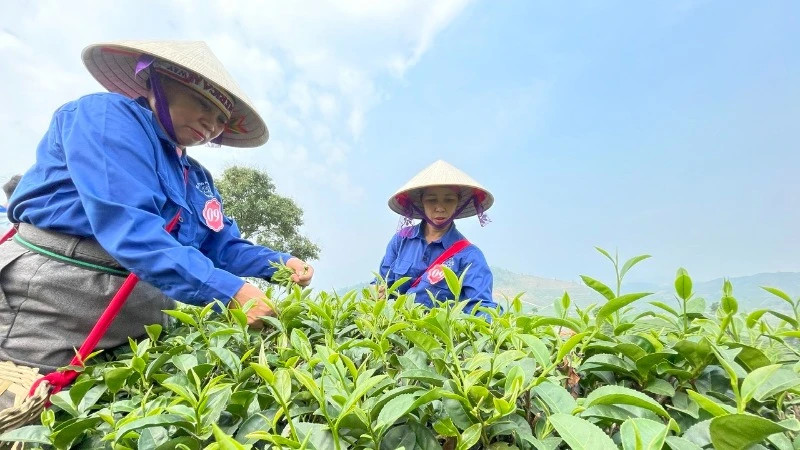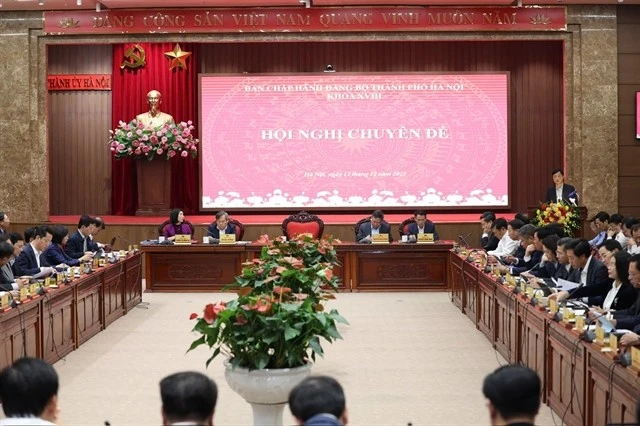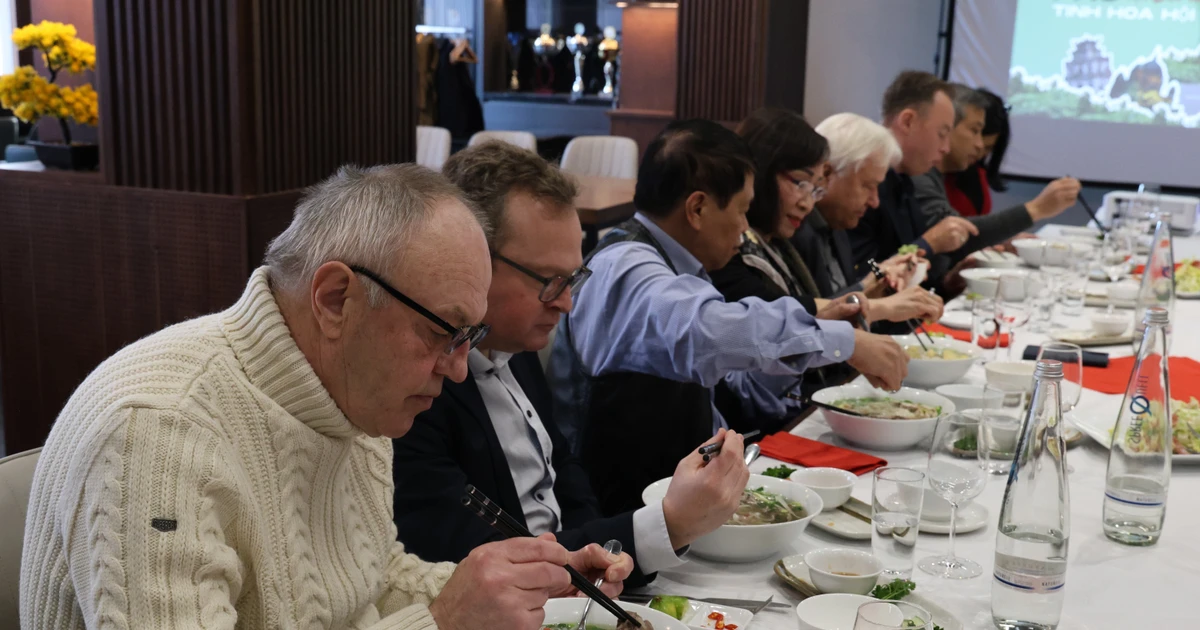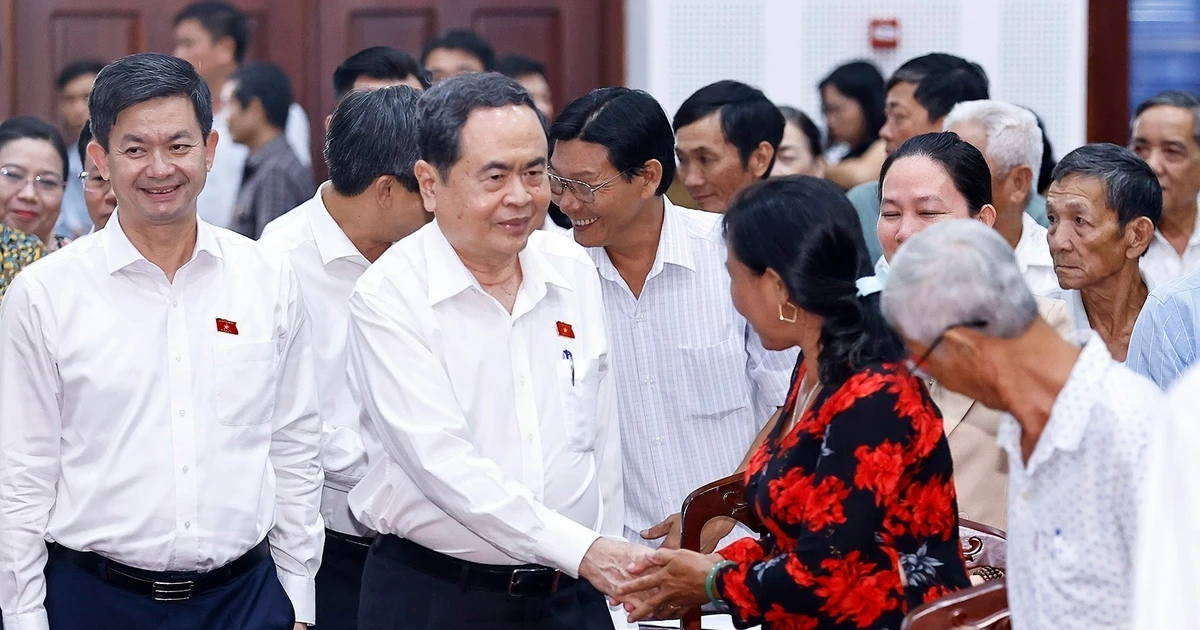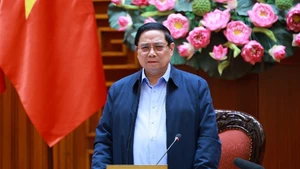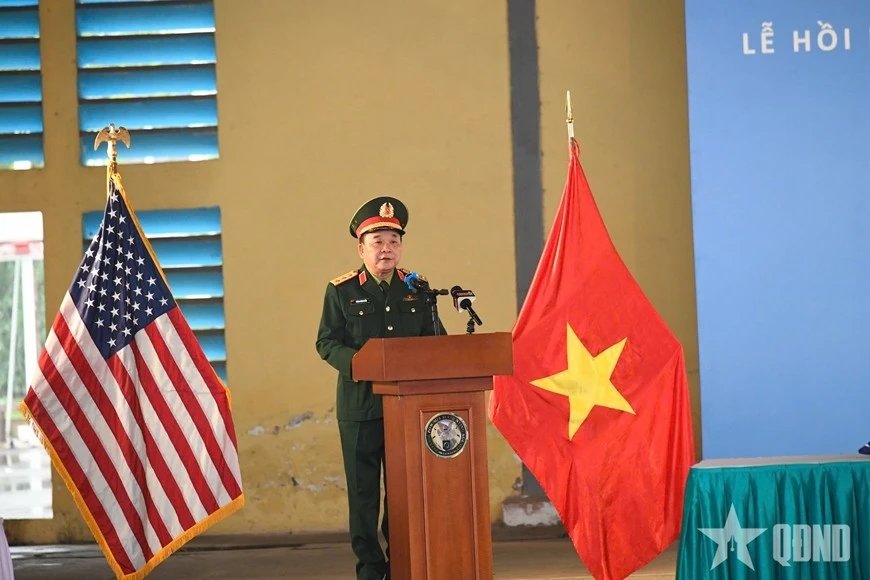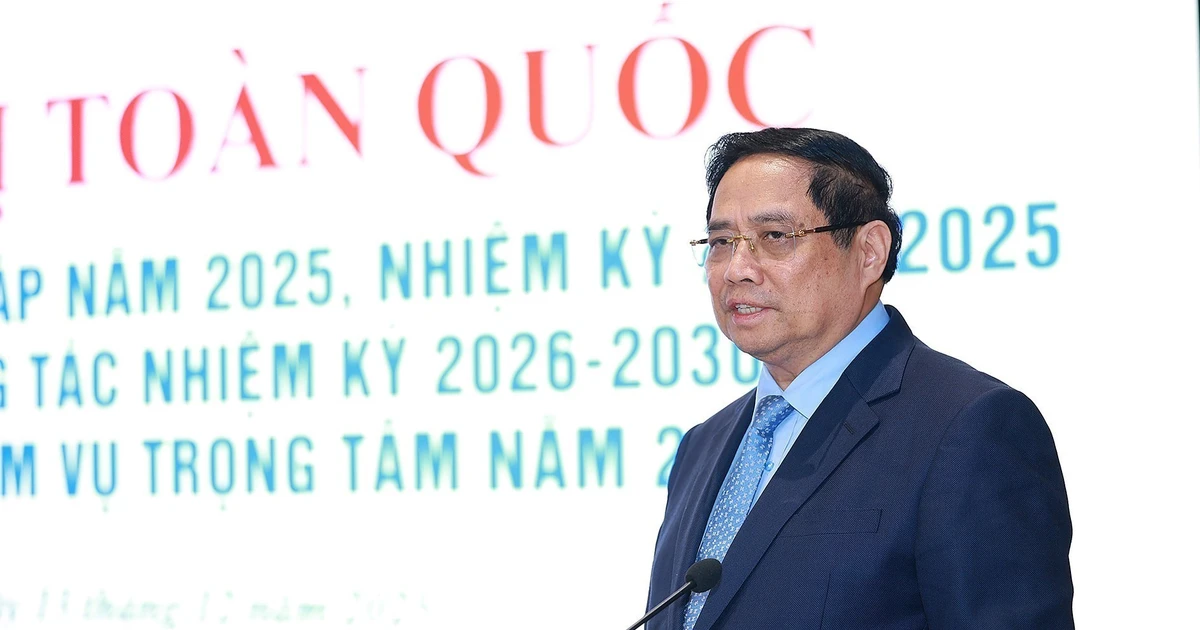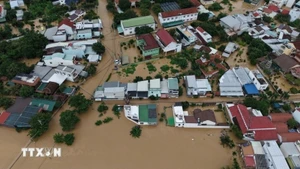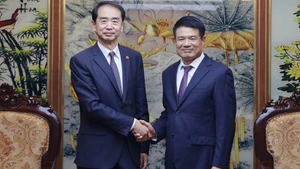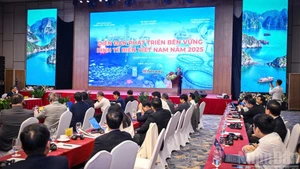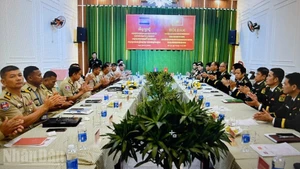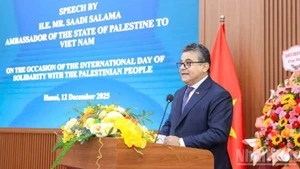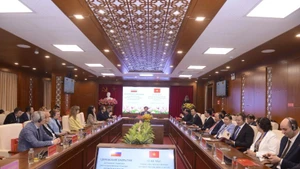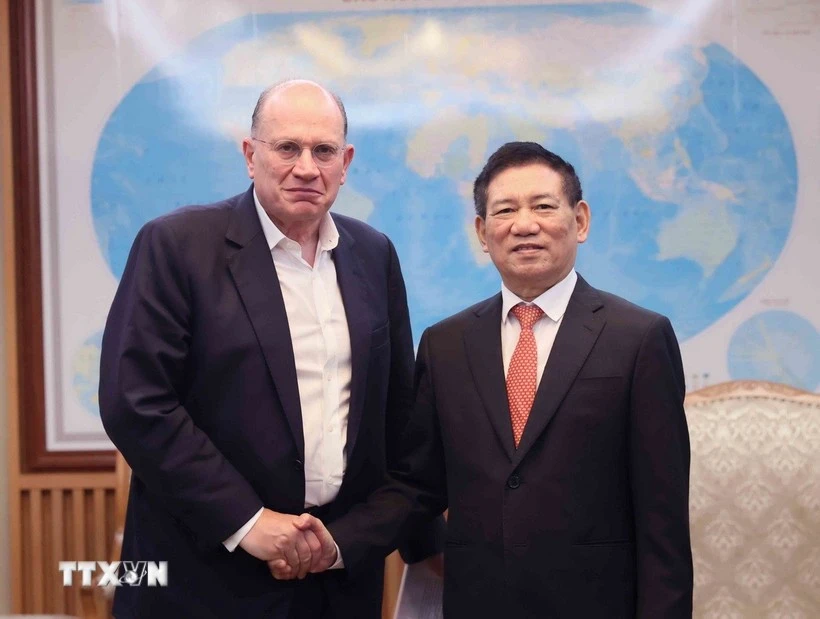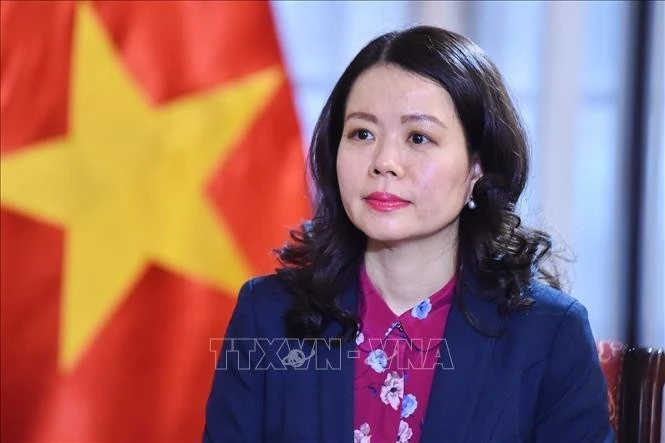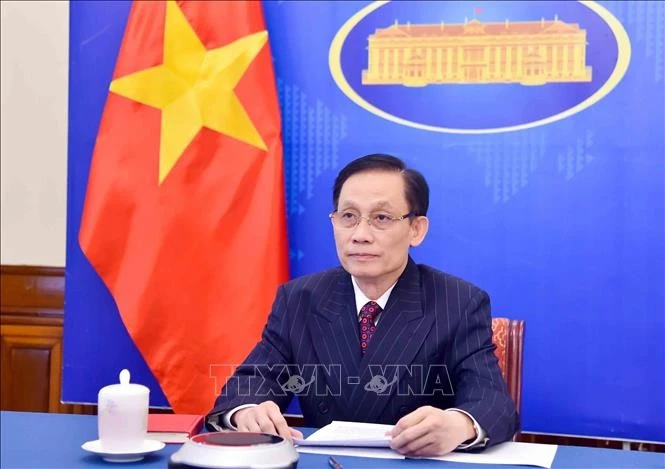His thoughtful and profound teachings are spiritual values, a strong driving force that inspires the will to be self-reliant, and care for the lives of all ethnic groups to become increasingly prosperous and happy.
These days of May, Lai Chau people remind each other of the time 20 years ago. At that time, Lai Chau was the most difficult province in the country, with poor infrastructure and a poverty rate of 60.57% in 2005.
For “everyone to be well-off”
From Uncle Ho’s advice to "lead production well, make the lives of ethnic minorities well-off", the Party Committee and government of Lai Chau Province determined the central task to develop the economy, improve and enhance people’s lives; focus on overcoming weaknesses; take advantage of and promote potentials and advantages; change the economic development mindset of ethnic minorities and mobilise resources to build socio-economic infrastructure.
Vu Manh Ha, Alternate Member of the Party Central Committee, Standing Deputy Secretary of Lai Chau Provincial Party Committee, said: “Thanks to the right development strategy, suitable to natural and social conditions, Lai Chau has achieved important achievements in many fields. The average GRDP growth rate in the 2020-2025 period of the province is estimated at 5.39%/year. GRDP per capita was estimated at 58.8 million VND, an increase of 15.5 million VND compared to 2020. In 2024, the poverty rate in the whole province will be 19.46%, a decrease of 41.11% compared to 2005”.
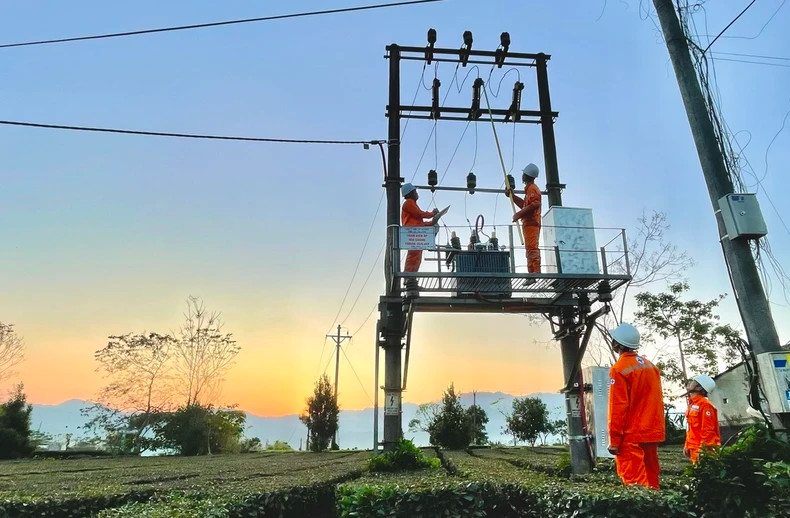 |
| Workers of Tan Uyen District Power Company handle a transformer station incident. (Photo: Tran Tuan) |
Lai Chau today is a vivid image of a mountainous border area with a new, more prosperous and stable appearance. Tang Nga Village, Nam Cha Commune, has 100% Cong people. Previously, due to the fragmented mountainous terrain, harsh climate, and lack of water in the dry season, people’s lives faced many difficulties. Worried about finding ways to help people escape poverty, Tang Nga Village Party Secretary Ly Van Chem persuaded and mobilised people to change their farming practices, develop the economy, and protect and preserve upstream forests.
Up to now, people have planted 150 hectares of cinnamon trees; nearly 60 hectares of sa moc and doi trees, 70 hectares of protective forests; reclaimed and cultivated 130 hectares of food crops; planted new trees, cared for and developed forests; and restored traditional festivals. Since then, Tang Nga Village has become a model village, doing good business and effectively preserving national identity.
Along with Tang Nga, many villages and hamlets such as Sin Suoi Ho, Ban Hon, Nam Nga, and Mit Noi are gradually overcoming difficulties, building a civilised lifestyle, developing household economy, preserving culture, and taking care of education.
Eliminating the “old and bad”, creating the “new and good”
Remembering the teachings of President Ho Chi Minh: “What is old and bad must be eliminated... What is old and not bad, but troublesome, must be modified to be reasonable... What is old and good must be further developed... What is new and good must be done”, the Party committees and organisations in Lai Chau are always concerned, hoping that people will change their thinking, eliminate bad customs, build a new lifestyle, and create a lever for economic development. From there, many creative ways of doing things, many models of learning and following Uncle Ho that are suitable for practice have been implemented.
Lai Chau Province has implemented 1,093 models associated with specific goals such as socio-economic development, sustainable poverty reduction, cultural preservation, and the elimination of backwards customs and practices. In Tam Duong District, building schools associated with preserving national cultural identity such as Mong flute clubs, brocade weaving, and xoe dance has become a bright spot in traditional education. Phong Tho district has made an impression with the model of the Thai folk culture preservation club, preserving traditional crafts and developing community tourism. In Ta Mung Commune, Than Uyen District, the model linking tea production and consumption according to VietGAP standards has created stable income for farmers, and the poverty rate has decreased to 12.83%. This is considered a miracle of the Party Committee, administration and people of Ta Mung Commune because in 2021, the poverty rate of the commune was 63.53%.
Secretary of the Ta Mung Commune Party Committee, Vang A Mang, said: “In parallel with persistently persuading people to abolish bad customs such as dry ghost worship, early marriage, and incestuous marriage, since 2017, the Commune Party Committee has mobilised people to switch to growing tea trees.”
Up to now, the commune has more than 300 hectares of tea, of which about 270 hectares are for business, with an output of more than 1,500 tonnes. Life has changed significantly, with an average income of 45.45 million VND/person/year in 2024, reaching 101% of the plan. Ta Mung has now completed all 19 new rural criteria.
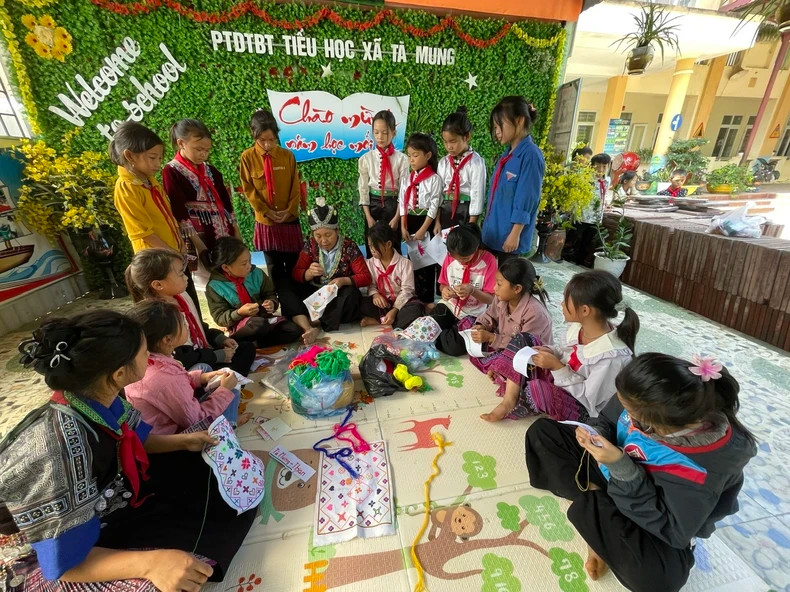 |
| Model of cultural preservation in schools at Ta Mung Primary Boarding School for Ethnic Minorities. (Photo: Tran Tuan) |
Deputy Head of the Lai Chau Communication, Education and Mass Mobilisation Department Le Chi Cong said: “Effective models and methods from the grassroots have created and will create a voluntary and enthusiastic emulation movement, spreading the spirit of learning and following Uncle Ho, creating a driving force for comprehensive development, encouraging people to rise up, not waiting or relying. The meaning of learning and following Uncle Ho is therefore more substantial”.
Close to the people, putting the interests of the people above all
After 20 years since the re-establishment of the province, Lai Chau is gradually rising, affirming its position as a “fence” province in the northwest of the Fatherland. Throughout this process, implementing Uncle Ho’s advice “Cadres must be truly close to and help the people, put the interests of the people first”, in all decisions, strategies, and actions, the Provincial Party Committee and grassroots Party committees have practised the motto “people are the root”.
Standing Deputy Secretary of Tam Duong District Party Committee, Cao Trang Trong said: “With small tasks but knowing that people have difficulty travelling, sometimes they will hesitate to do them, cadres are always ready to go directly to the people, guide and support them to implement them in the villages and hamlets. Eliminating bad customs is very difficult for ethnic minorities, so the results achieved are thanks to the truly persistent, tenacious campaigns, not afraid of difficulties, hardships of Party committees, Party organisations and authorities”.
Regarding major policies such as merging communes, implementing a two-level government, Lai Chau has many “difficulties” due to the fragmented terrain, large area, and small population. However, many districts have boldly proposed to prioritise the choice of development space, instead of dividing the number of communes for the convenience of cadres. The trust of the people is the greatest achievement for each cadre and party member in Lai Chau.
Solemn and majestic in the centre of the Provincial People’s Square, the statue of President Ho Chi Minh with the people of all ethnic groups is both the pride of Lai Chau and a manifestation of Uncle Ho’s love for the people of the remote border region of the Fatherland.
Lai Chau today is still forest after forest, mountain after mountain, but full of new vitality with cool green tea fields, sturdy houses, spacious schools filled with the sounds of students.
